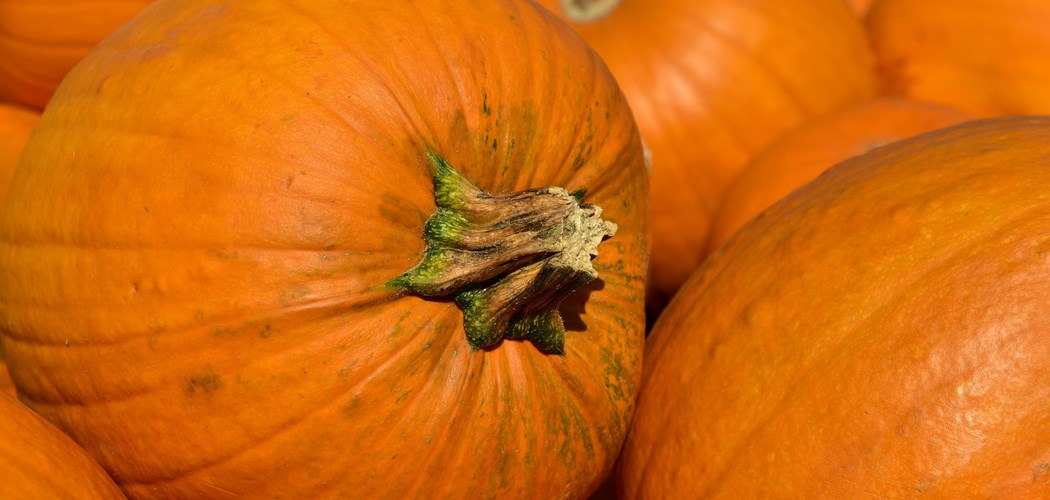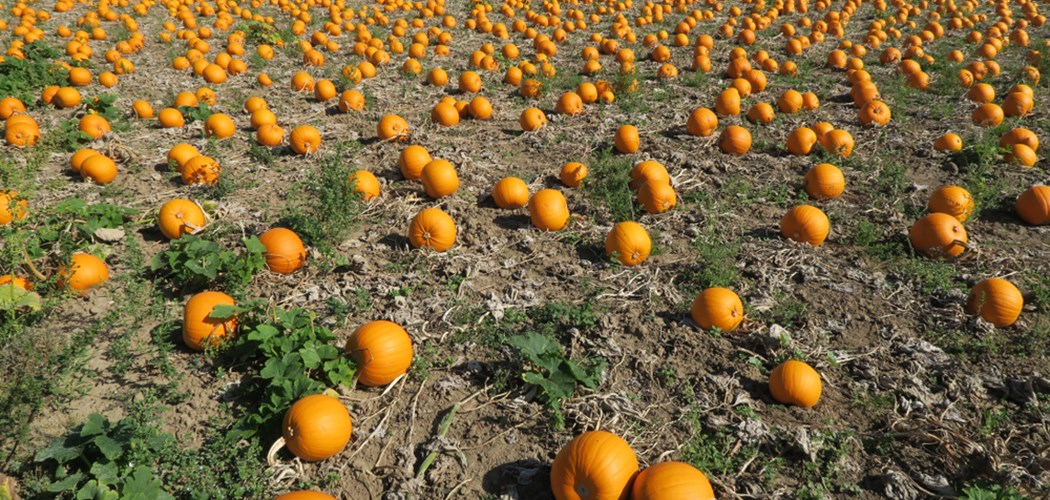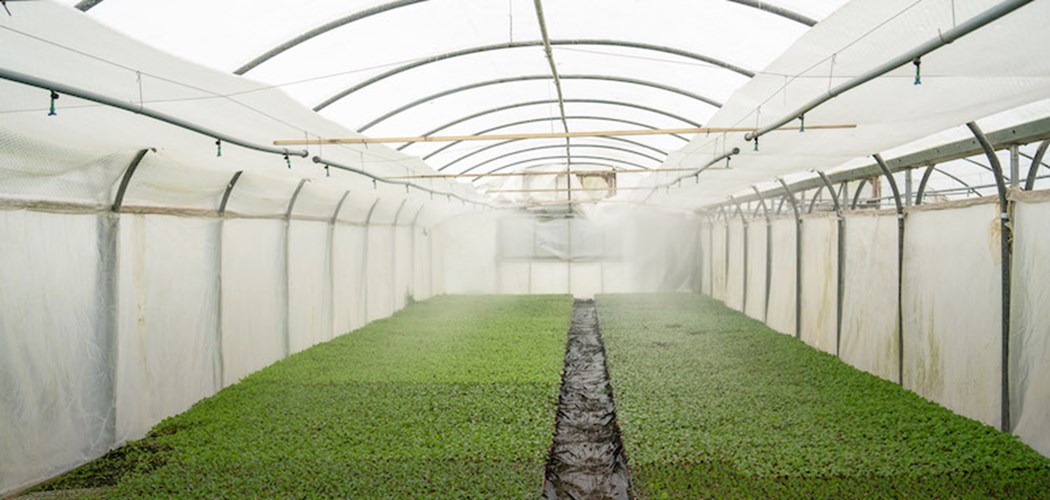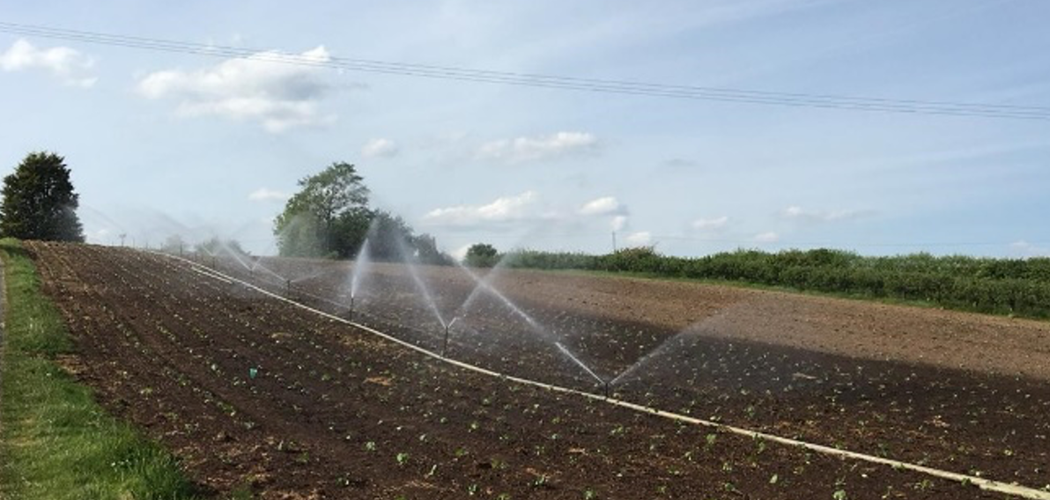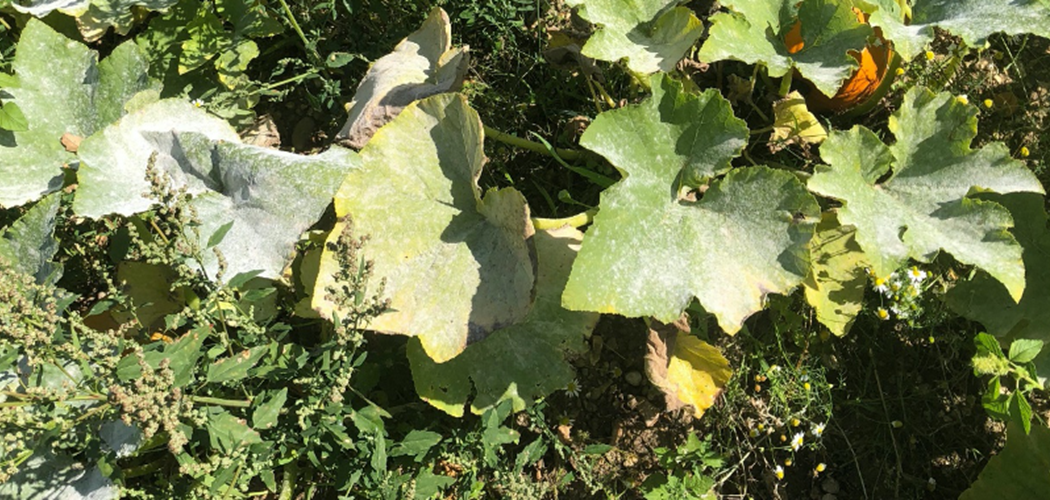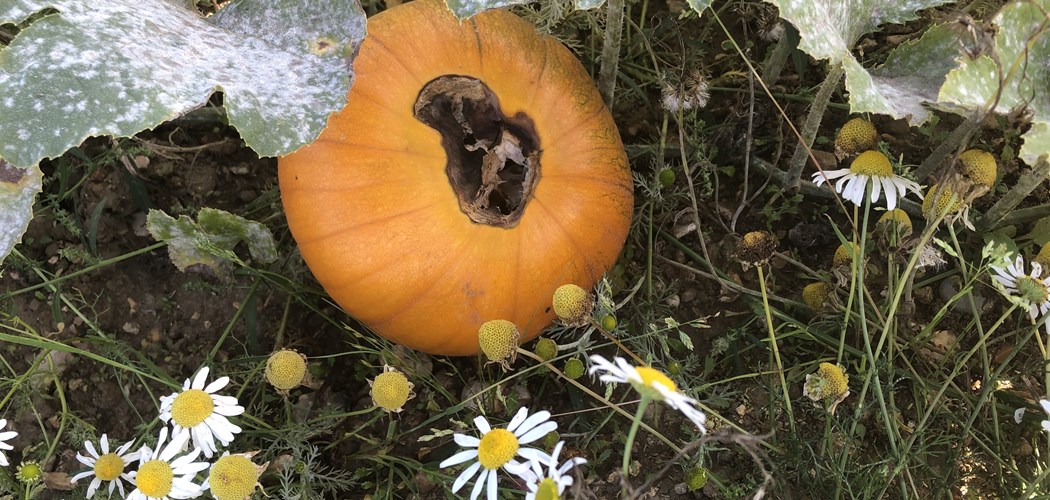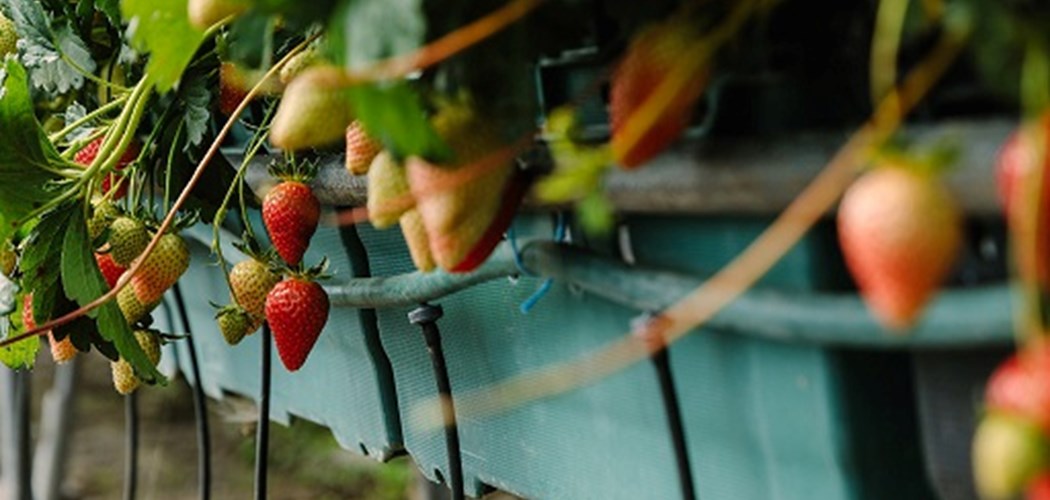Technical Advice Sheet Pumpkin planning and weed control – May

Download the Toolkit: Pumpkin Power Hour May - English.pdf
Planning for Planting
You should now be planning the planting for this year’s crop. If you’re new to pumpkins, it’s recommended that you plant transplanted seedlings rather than drilling. You’re just in time to order these from a propagator if you act quickly, and you should aim to plant these in the last week of May. When transplants arrive they will need to be hardened off before planting – keep sheltered and protected from frost for a few days before planting. Transplants can be planted with a multi-planter or cabbage planter, or into a ploughed furrow that is covered over after planting. Transplants should be planted with a 0.9m spacing down rows 1m apart. You can also propagate your own plants from seed under tunnels, germinating in 126 module trays. Seeds should be planted pointed end down, and provided with warmth up to 23°C if possible. These will need to be watered once or twice daily to prevent them drying out, especially when larger. Feed should be included with each watering – a standard tomato or strawberry feed will do – at 1 g/L of water. These will be ready for planting with around 1 true leaf, but you’ll want to avoid leggy plants as these can be easily wind damaged.
For drilling aim for a target density of 4 – 5k seeds per acre. It can be easier to avoid weed overgrowth at a higher density, but you also risk smaller fruit. You’ll achieve comparable yields (as gross weight) between high and low densities although the fruit will be smaller at higher densities – it’s easier to sell larger fruit for higher value! That said, smaller varieties will ripen sooner and give a more even, deeper colour than larger fruit. You may also want to drop densities to improve access for pick-your-own customers. Seeds will need warm soils to germinate, but you can plan on the last week of May. Seeds can be drilled with a modified maize planter to give spacing of 30” on a 72” wheeler.
After Planting Care
Make sure the crop is well watered after planting. Irrigation can be applied either by silage boom or trickle tape, although make sure trickle tape is used directly on the plants as the roots will not have developed. Be careful with pest control for rabbits, pigeons and slugs after planting – an application of ferric phosphate pellets will help with the latter. For larger areas consider microfleece when the plants are young. You should see good growth within 14 days, although take care not to give too much water otherwise you risk the crop becoming too vegetative. You should aim to walk your pumpkins every week to check on their progress and monitor for disease development.
Soil Management
You should consider a soil analysis every three years. Using the results the Vegetable section of RB209 (https://ahdb.org.uk/knowledge-library/rb209-section-6-vegetables-and-bulbs) covers pumpkin and courgette and can be used to develop a bespoke fertiliser management plan for your land. If you don’t have access to soil analysis results, 400 kg/ha of a general compound fertiliser (e.g. 10-10-20, 15-15-15 or 17-17-17) should be sufficient. You can also use a mixture of straights, especially if you are on high phosphate soils. Soil pH should be 6 – 7.5, with 7.5 being optimum. If the soil is too acidic, you can lime before planting. Pelleted lime can be spread with a normal fertiliser spreader and is much faster acting that ground lime. Ground lime will typically require a contractor for application, and can take up to a year to raise the soil pH. Sulphur is unlikely to be limiting, but if you have low sulphur problems with other crops this can be supplemented if you apply sulphate of ammonia and sulphate of potash as part of normal fertility management. Pumpkins can become very vegetative if overfeed, risking higher levels of powdery mildew and greater portions of male flowers.
Weed Control
Weed control should be your main aim early in the season – uncontrolled weeds can quickly outgrow the crop, competing for lightsand nutrients. Before planting you should aim to have a sterile seed bed with weeds burnt off with Roundup – check your formulation as some applications must be made 3 or 5 days before planting. Planting at higher densities can improve weed control but this needs to be balanced against fruit size. Once planted you should immediately apply weed control to prevent weeds from establishing. Flexidor 125 can be applied under EAMU (0883/20) at 500 ml/ha straight after planting, but you can also use Gamit at 0.12 ml/ha (EAMU 2831/15) or Kerb Flow at 1.1 L/ha (2416/08) to provide control for 3-4 weeks after planning. While Stomp Aqua should not be used on cucurbits, Wing-P can be used under EAMU (0619/18) to control weeds in field strips but can careful to not overspray the rows and don’t apply if there is a risk of rain. Residual herbicide application can be slow acting, but it’s important that you deal with weeds early before they become established as hand removal can become very expensive.
Disclaimer
Every effort is made to ensure the accuracy of information and recommendations given in these notes. All applications of crop protection chemicals should be made in accordance with label recommendations, which should be consulted before spraying. Some of the pesticides mentioned in these notes may not be supported by label recommendations for their use on pumpkin crops but are permissible via Extension of Authorisation for Minor Use (EAMU) in the UK under ‘The Revised Long Term Arrangements For Extension Of Use (2002)’. In these cases, the use of the pesticide is at the risk of the user and Tyfu Cymru does not accept liability for any loss or damage caused by such use. The references to on-label approvals and EAMUs for use of pesticides in pumpkin crops and are correct at the time of writing. These are subject to change and approval may be withdrawn at any point. It is the grower's responsibility to check approvals before use of pesticides. If in doubt a grower should seek advice from a BASIS qualified advisor - this is available free of charge for eligible growers through the Tyfu Cymru program, please contact us to arrange an appointment – email/telephone advice is also available.
Related Pages
Webinar: Integrating Farm Tourism into your Horticulture Business
Have you considered a farm shop, a pop up café, a seasonal events calendar? How about an ‘Insta field’? The demand for photo worthy fields is on the rise, and with careful planning, establishing a pick your own will have the public flocking to your f…
2/24/2021 1:44:27 PMTechnical Advice Sheet Pumpkin Power Hour – November
The start of the 2020 season was difficult. Late frosts until the first week in May and dry soils delayed planting, but heavy rains then delayed planting further.
12/14/2020 11:31:10 AMTechnical Advice Sheet Pumpkin PYO Marketing with Covid
While many of the covid-19 restrictions are being relaxed, it’s likely to continue to pose a challenge for growers for the foreseeable future – especially for those selling directly to customers for whom a high footfall on site is needed to achieve g…
9/30/2020 1:07:45 PMWelsh Fruit and Vegetable Production - Baseline Study
This baseline study for Tyfu Cymru was conducted by Dr. Amber Wheeler and looks at the opportunities for Welsh Fruit and Vegetable production.
6/26/2020 4:05:34 PMTechnical Advice Sheet Pumpkin Power Hour – June
Tyfu Cymru have launched regular Power Hour sessions for members of the Pumpkin Network. These focused sessions are facilitated by Tyfu Cymru together with technical experts and include an update on topical issues based on growers instant needs, and…
6/25/2020 3:05:58 PMPumpkin Disease Control
The main disease of concern in pumpkin during the early season is powdery mildew, and this can start to be a problem from June onwards, starting with flowering.
5/28/2020 1:50:36 PMOur Guide to Mobile Card Payment Systems
How customers pay for their goods is changing - debit card transactions overtook cash in 2017, and these are forecast to represent over half of all transactions by 2024. The move away from cash has also be driven by the increase in contactless card p…
5/28/2020 1:37:30 PMManaging Blossom End Rot in Pumpkin
Blossom End Rot (BER) is a particular problem that pumpkin growers face, especially when growing for pick-your-own (PYO) markets.
4/24/2020 9:57:25 AMPick your Own (PYO): What you need to know to get 5* rated…
In our series of industry insights, we provide some background to the market, as well as some top tips on ensuring that your customer experience hits that important 5-star customer rating.
12/16/2019 1:38:55 PM

